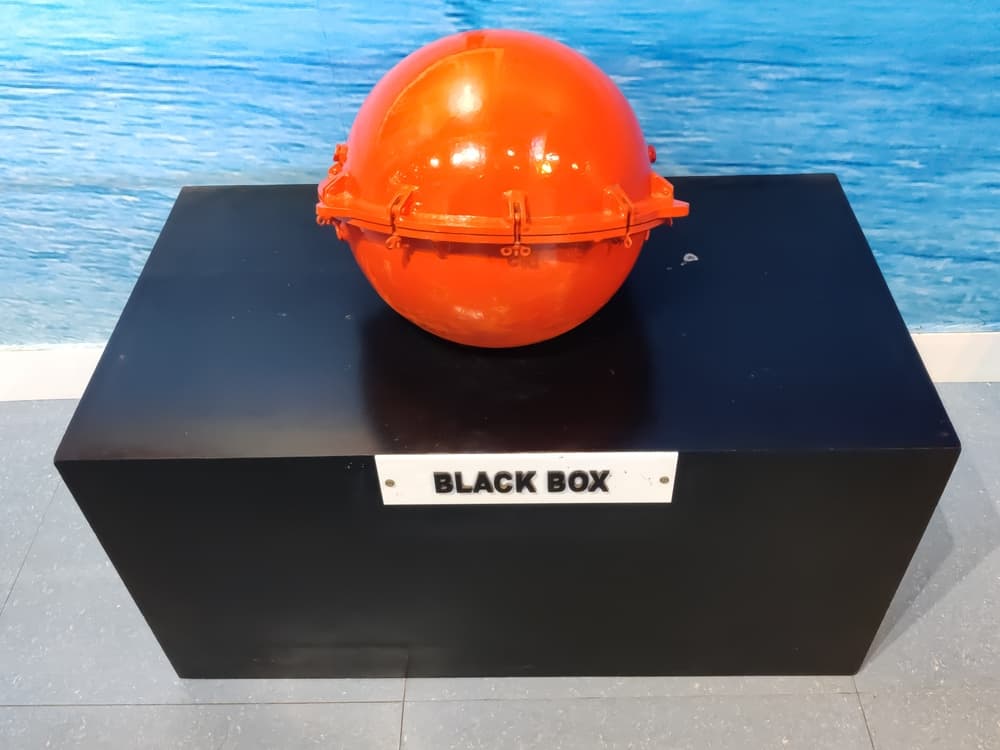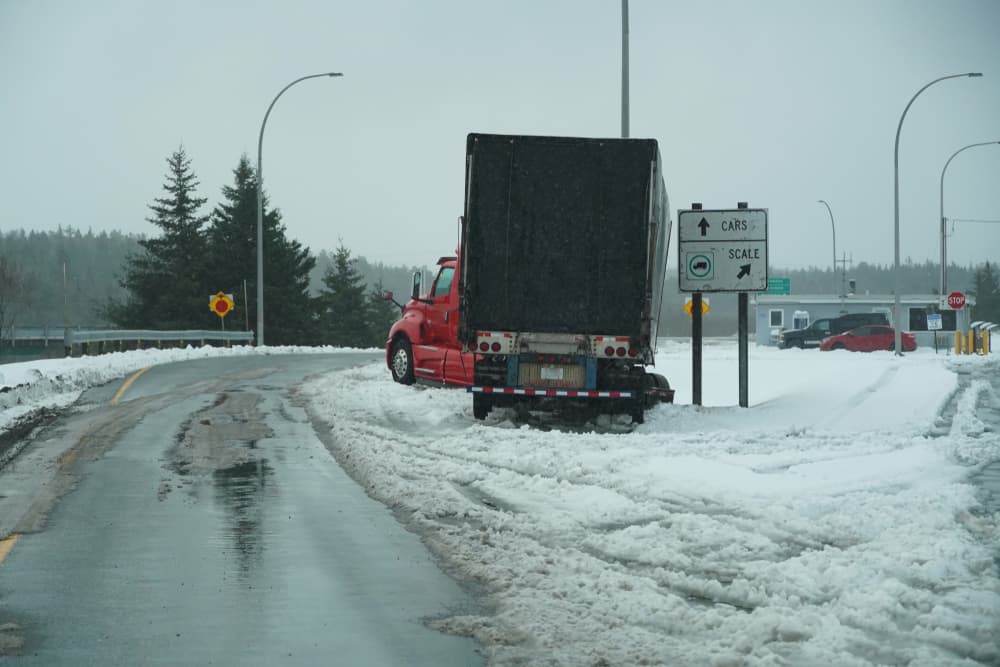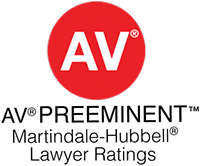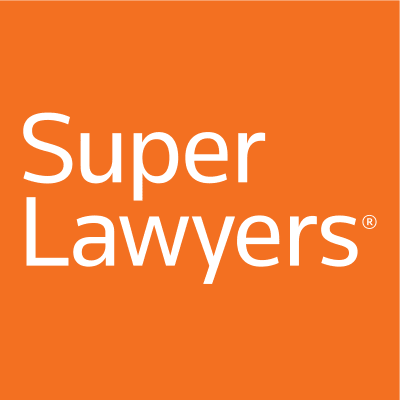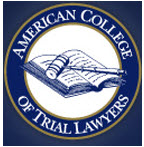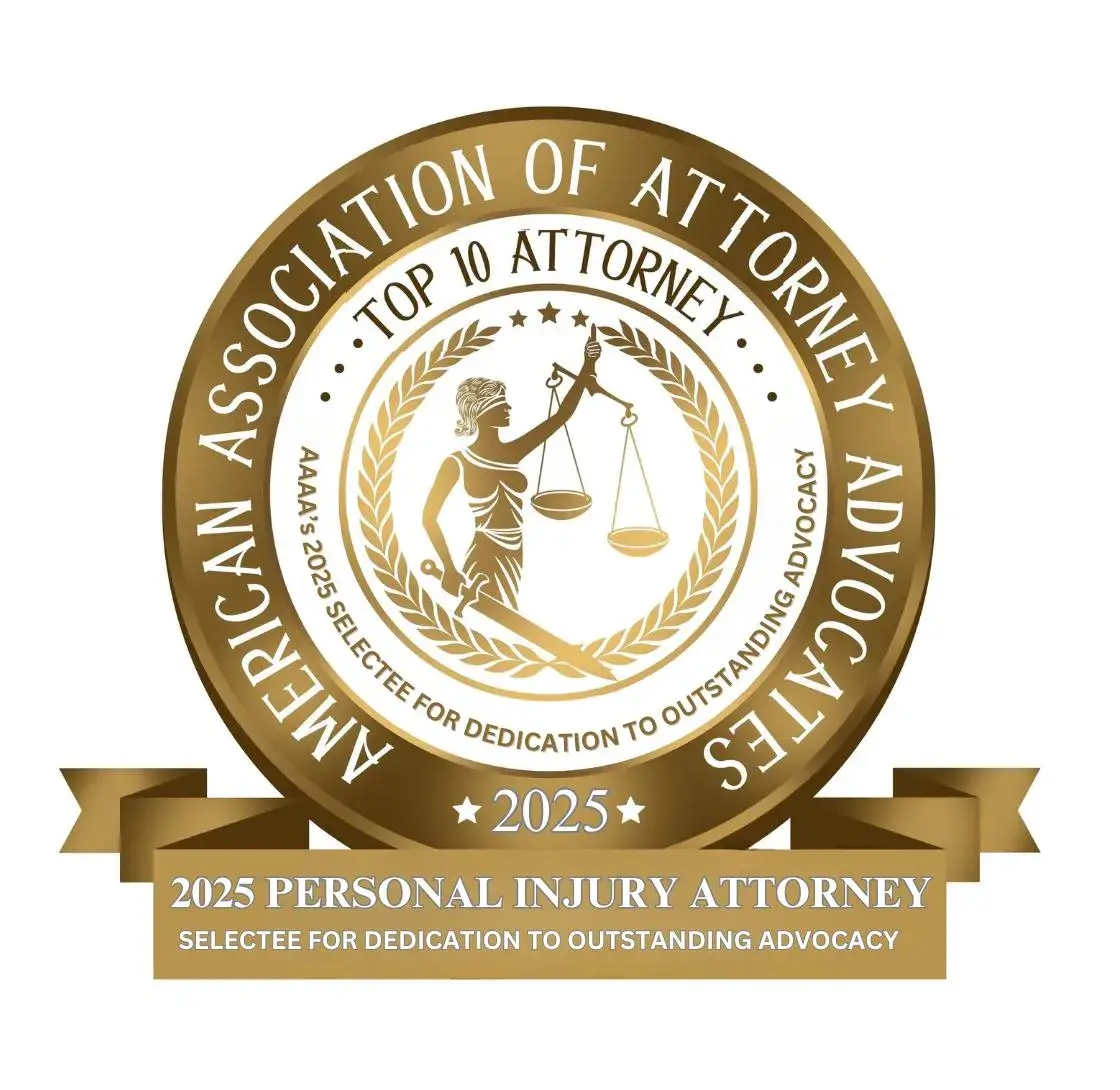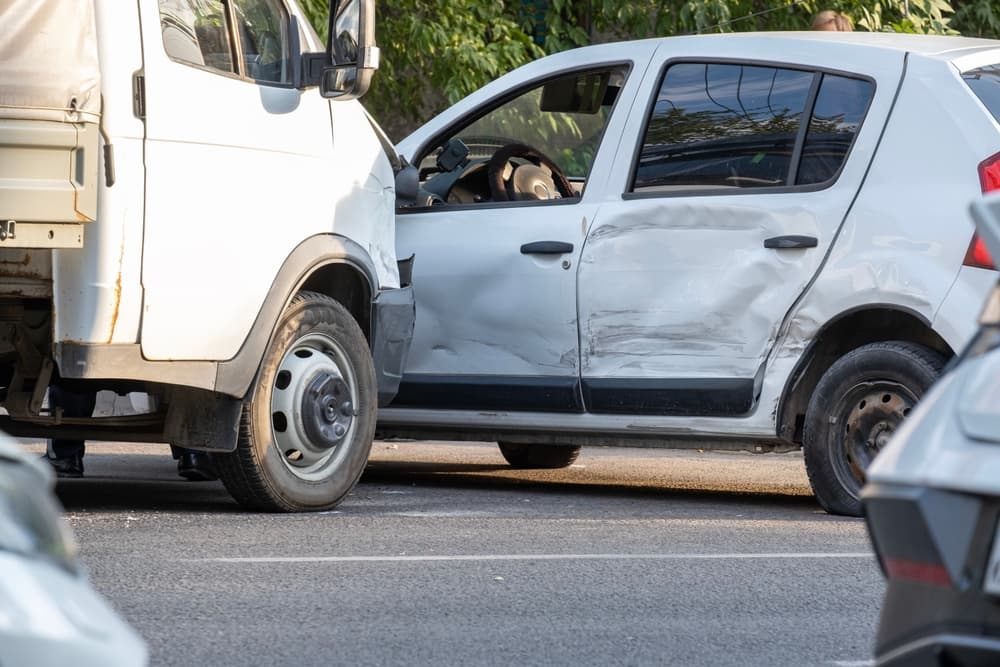
What You Need to Know About Underride Truck Accidents
An underride truck accident—a crash where a smaller vehicle slides underneath the trailer of a large truck—is one of the most devastating events that can happen on our roadways. Because these collisions bypass a car’s essential safety systems, they frequently result in catastrophic injuries or death.
What Is an Underride Accident?
An underride accident occurs when a smaller passenger vehicle, like a car, SUV, or pickup truck, collides with a large commercial truck (often called a tractor-trailer or semi-truck) and slides partially or completely underneath the body of the trailer.
These devastating accidents are generally categorized into two types:
- Rear Underride: This is the more commonly known type. It happens when a passenger car strikes the back of a large truck and slides under the trailer. This can occur if the truck stops suddenly, is moving much slower than the flow of traffic, or is illegally or improperly parked on the side of a road or highway shoulder, especially at night or in poor visibility conditions.
- Side Underride: This type of accident happens when a passenger vehicle T-bones the side of a tractor-trailer and slides beneath it. This often occurs at intersections when a truck is making a wide turn, or on highways when a truck changes lanes and cuts off a smaller vehicle.
The fundamental danger of any underride collision is that it bypasses nearly all of your vehicle’s most critical safety features. Your car’s bumpers, crumple zones, and even its airbags are designed to absorb impact in a collision with another vehicle of similar height.
When a car goes under a truck trailer, the point of impact is not the bumper, but the windshield and the passenger cabin itself. The top of the car is often sheared off, leading to catastrophic and life-altering injuries for the people inside.
Why Underride Injuries Are So Catastrophic
It is difficult to read about, but it is essential to understand the gravity of these accidents. Because the passenger compartment bears the full force of the collision, the injuries sustained in underride accidents are among the most severe seen on our roadways.
These often include:
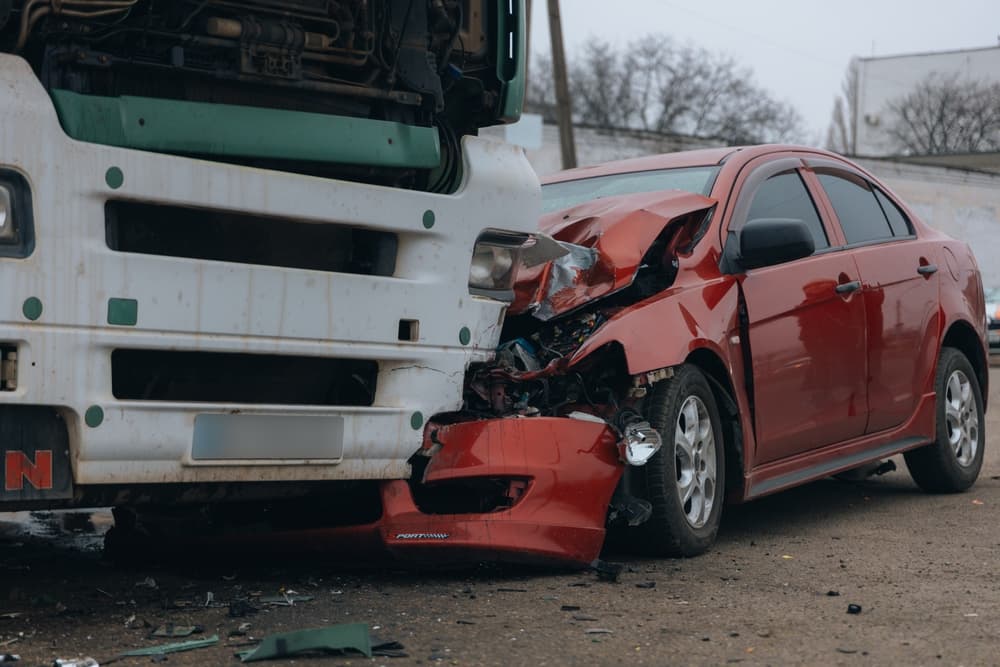
- Traumatic Brain Injuries (TBI): Severe impact to the head can cause everything from concussions to permanent, life-altering brain damage.
- Spinal Cord Injuries: The violent forces can fracture vertebrae, leading to paralysis, such as paraplegia or quadriplegia.
- Decapitation and Severe Head Trauma: This is a tragic and horrifyingly common outcome in high-speed underride crashes.
- Crushing Injuries: The sheer weight and force of the truck can cause devastating crush injuries to the torso and limbs.
- Multiple Bone Fractures: Broken arms, legs, ribs, and pelvic bones are common.
- Wrongful Death: Tragically, many underride accidents are fatal.
The severity of these injuries means that the path to recovery is often incredibly long, arduous, and expensive. It can involve multiple surgeries, extensive rehabilitation, the need for lifelong medical care and equipment, and the inability to ever return to work.
The emotional and psychological toll on both the victim and their family is immeasurable. This is why understanding the cause of the accident is so critical, because the person or company responsible must be held accountable for the immense harm they have caused.
How Do Underride Truck Accidents Happen?
Underride accidents are almost never just “accidents.” They are typically the result of negligence, a failure by a truck driver or a trucking company to follow safety rules and operate with reasonable care. Determining the cause is a complex process, but most underride collisions can be traced back to one or more of the following factors.
Negligence on the Part of the Truck Driver
- Improper Turns: A truck driver making a wide right turn at an intersection on a busy local road, like Main Street in Fort Lee or State Street in Hackensack, can block multiple lanes of traffic. If a car does not see the trailer swinging out, it can lead to a side underride.
- Sudden or Unsafe Lane Changes: On major highways like I-80 or the Major Deegan Expressway, a tired or distracted truck driver who changes lanes without a proper signal or checking their extensive blind spots can force a car underneath the trailer.
- Illegal or Unsafe Parking: A trucker pulling over on a dark shoulder or ramp without deploying warning triangles or ensuring their lights are working is creating a deadly hazard. A driver approaching at highway speeds may not see the stationary trailer until it’s too late.
- Driver Fatigue: Federal regulations limit how many hours a trucker can drive, but economic pressures often lead drivers to violate these rules. A drowsy driver has slowed reaction times and poor judgment, making them a danger to everyone on the road.
- Distracted Driving: Texting, adjusting a GPS, or eating while driving a 40-ton vehicle is a recipe for disaster.
- Speeding or Driving Too Fast for Conditions: In rain, snow, or fog, a truck’s stopping distance increases dramatically. Driving too fast can easily lead to a jackknife or a rear-end collision that causes an underride.
Negligence on the Part of the Trucking Company
- Inadequate or Defective Underride Guards: While federal law requires trucks to have rear underride guards, these guards are often poorly made, damaged, or not built to withstand a real-world impact. Some companies may even illegally remove or fail to repair them.
- Lack of Conspicuity Tape: Federal regulations require trucks to have strips of reflective red-and-white tape on their sides and rear to make them more visible at night. Faded, dirty, or missing tape can render a trailer nearly invisible in the dark.
- Poor Maintenance: A trucking company has a duty to keep its fleet in safe, working order. This includes regular inspections of brakes, tires, and lights. A blown tire or failing brakes can cause a driver to lose control, leading to a crash.
- Negligent Hiring and Training: Companies that fail to perform background checks, hire drivers with poor safety records, or provide inadequate training on defensive driving and safety protocols can be held liable for the actions of their employees.
A Critical Piece of Equipment: The “Mansfield Bar” and Its Limitations
The metal bar hanging from the back of most semi-trailers is known as a rear impact guard, or more informally as a “Mansfield bar.” It is named for the actress Jayne Mansfield, who was killed in a horrific underride accident in 1967. Her death brought national attention to the danger and led to regulations requiring these guards on trucks.
The purpose of the Mansfield bar is simple: to prevent a car from sliding underneath the trailer in a rear-end collision. However, the current federal standards for these guards have been criticized by safety advocates for years as being too weak to prevent underride in many real-world crashes.
Even more troubling is the lack of a federal requirement for side underride guards. While trucks are long, flat surfaces, there is no mandate for them to have any protection along their sides.
This means that in a T-bone or sideswipe scenario, there is nothing to stop a passenger car from going directly underneath the trailer. While some safety-conscious companies have voluntarily installed side guards, most have not, choosing to save money at the expense of public safety.
Uncovering the Truth: The Critical Evidence in a Truck Accident Case
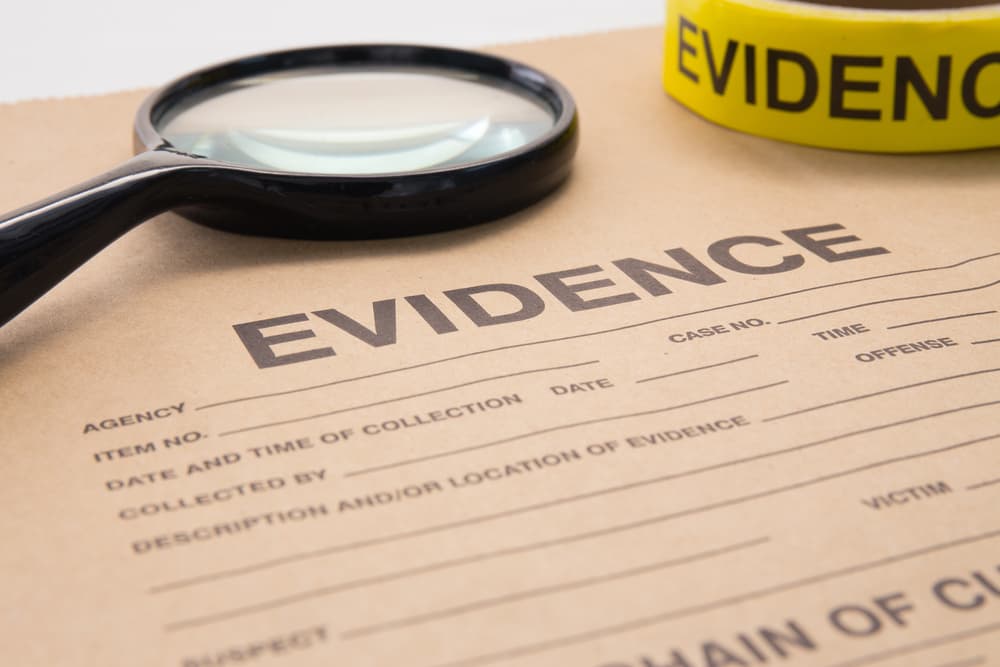
Proving that a truck driver or their company was negligent is far more complex than it might seem. While a police report provides an initial snapshot, the real story of why a crash happened is often hidden within data, documents, and the mechanics of the truck itself. Securing this evidence quickly is one of the most important steps in any truck accident claim, as trucking companies and their insurers will move swiftly to protect their interests.
An experienced legal team knows exactly what to look for. The investigation goes far beyond the crash scene to uncover the truth. Key pieces of evidence include:
- The Truck’s “Black Box”: Most modern commercial trucks are equipped with an Electronic Control Unit (ECU) or an Event Data Recorder (EDR). Similar to an airplane’s flight recorder, this device records critical data in the seconds leading up to a collision, such as the truck’s speed, whether the brakes were applied, cruise control usage, and engine RPMs. This data can directly prove or disprove the driver’s account of the accident. However, this data is often recorded on a loop and can be overwritten as the truck is driven, or it can be “lost” if the truck is repaired. It is vital that a legal notice, called a spoliation letter, is sent to the trucking company immediately, demanding they preserve the truck and its data.
- The Driver’s Electronic Logs (ELD): Federal law mandates that most truckers use an Electronic Logging Device (ELD) to track their hours of service. This is designed to prevent driver fatigue—a leading cause of truck accidents. An analysis of these logs can reveal if the driver violated federal regulations by driving too long without a rest break, falsified their logs, or was pressured by their company to keep driving when they were tired.
- Company Maintenance and Dispatch Records: The truth often lies in the trucking company’s files. A thorough investigation demands access to maintenance and inspection reports, which can show a history of poor upkeep, faulty brakes, or known defects with the underride guard. Dispatch records can reveal if the driver was on an unrealistic schedule that encouraged speeding or reckless behavior.
- The Driver’s Qualification File: Trucking companies are required to maintain a detailed file on every driver they employ. This file contains their employment history, driving record, drug and alcohol test results, and training certifications. This can reveal if the company negligently hired a driver with a history of safety violations or failed to provide adequate training.
Gathering and analyzing this information requires focused knowledge and resources. It is how you level the playing field. This deep dive into the evidence is what allows your story to be told completely and powerfully, ensuring that the full scope of the negligence that caused your harm is brought to light.
Our New York Truck Accident Lawyers Are Here for You
The legal and insurance landscape is incredibly complex. Trucking companies and their insurers have teams of aggressive lawyers and experts whose entire job is to minimize their financial responsibility. They may try to blame the victim for the accident, dispute the severity of their injuries, or delay your claim in the hopes that you will give up and accept a lowball settlement that won’t even begin to cover your future needs.
This is where having a dedicated, experienced legal team on your side becomes not just an advantage, but a necessity.
At Maggiano, DiGirolamo & Lizzi, P.C., we represent the person next door. We stand up for the families in our communities who have been harmed by the negligence of others. Our guiding principles are simple: Courage Defines Us. Justice Drives Us. Our Clients Inspire Us.
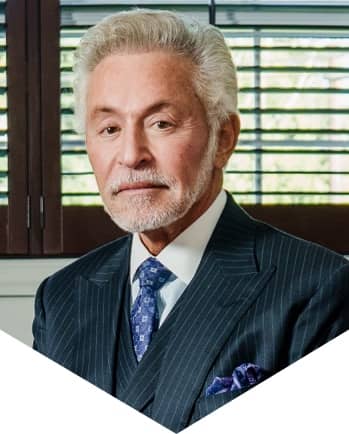
Our firm is uniquely equipped to handle the complexities of underride accident cases. With over 100 years of combined experience, our attorneys are nationally recognized for their skill in truck accident litigation. We know the federal trucking regulations inside and out. We work with the nation’s top accident reconstructionists, engineers, and medical experts to build a powerful, undeniable case on your behalf. We are a team of 30 professionals dedicated to your cause, and we have a long track record of securing multi-million dollar verdicts and settlements for our clients.
Your story deserves to be heard. Your fight for justice is our fight, too. Contact Maggiano, DiGirolamo & Lizzi today at (201) 585-9111 or through our online form for a free, no-obligation consultation. Let us take on the legal burdens so you can focus on what matters most: your healing and your family.



